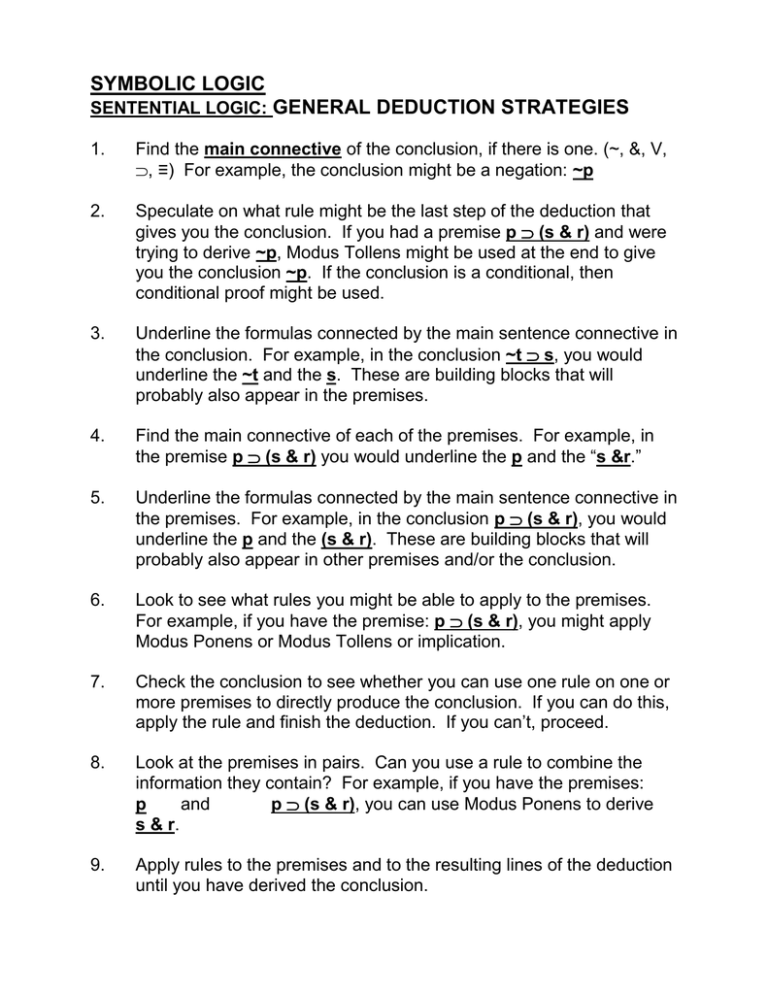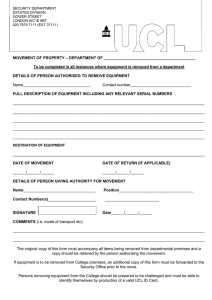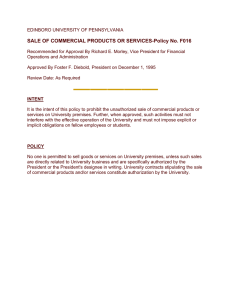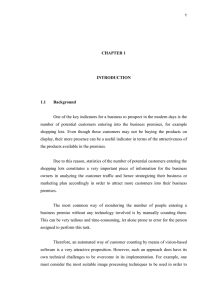General Deduction Strategies
advertisement

SYMBOLIC LOGIC SENTENTIAL LOGIC: GENERAL DEDUCTION STRATEGIES 1. Find the main connective of the conclusion, if there is one. (~, &, V, , ≡) For example, the conclusion might be a negation: ~p 2. Speculate on what rule might be the last step of the deduction that gives you the conclusion. If you had a premise p (s & r) and were trying to derive ~p, Modus Tollens might be used at the end to give you the conclusion ~p. If the conclusion is a conditional, then conditional proof might be used. 3. Underline the formulas connected by the main sentence connective in the conclusion. For example, in the conclusion ~t s, you would underline the ~t and the s. These are building blocks that will probably also appear in the premises. 4. Find the main connective of each of the premises. For example, in the premise p (s & r) you would underline the p and the “s &r.” 5. Underline the formulas connected by the main sentence connective in the premises. For example, in the conclusion p (s & r), you would underline the p and the (s & r). These are building blocks that will probably also appear in other premises and/or the conclusion. 6. Look to see what rules you might be able to apply to the premises. For example, if you have the premise: p (s & r), you might apply Modus Ponens or Modus Tollens or implication. 7. Check the conclusion to see whether you can use one rule on one or more premises to directly produce the conclusion. If you can do this, apply the rule and finish the deduction. If you can’t, proceed. 8. Look at the premises in pairs. Can you use a rule to combine the information they contain? For example, if you have the premises: p and p (s & r), you can use Modus Ponens to derive s & r. 9. Apply rules to the premises and to the resulting lines of the deduction until you have derived the conclusion.





